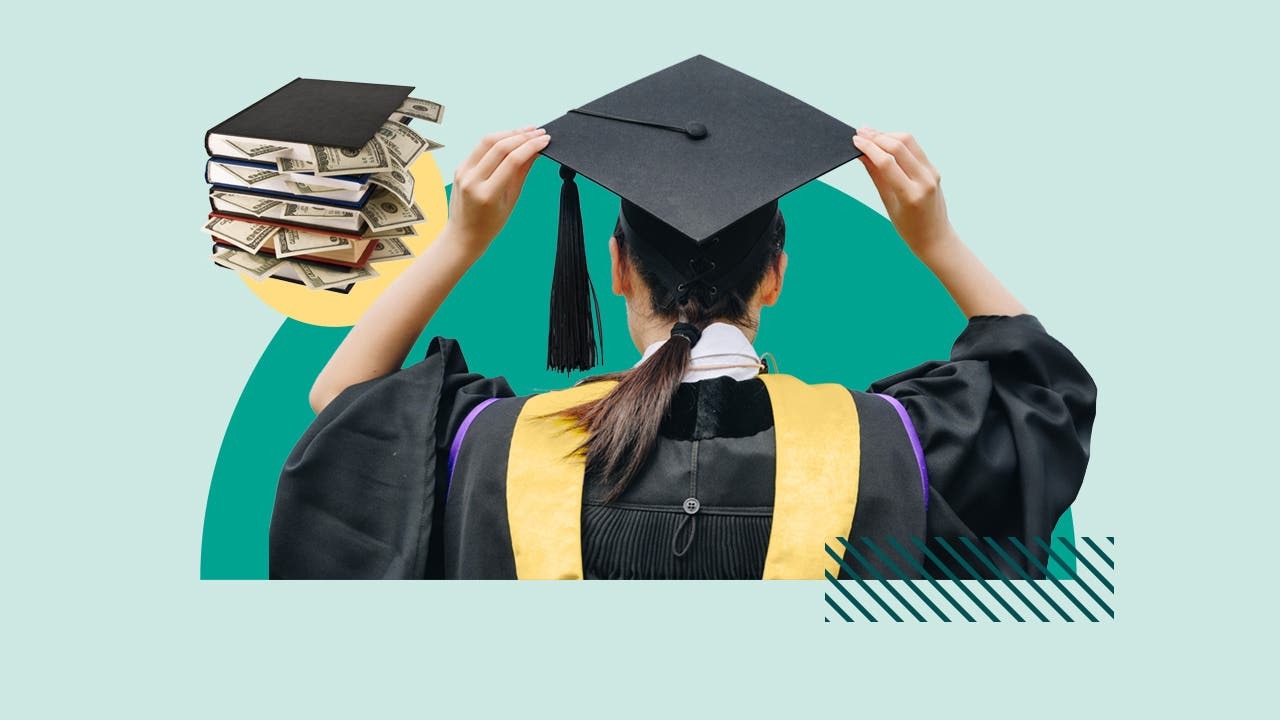
Why are student loans such a big deal? Student loans have become a massive part of college life in the U.S., with over $1.6 trillion owed by more than 43 million people. This debt is second only to mortgages in the consumer debt category. The journey of student loans began during the Cold War, aiming to boost education in fields crucial for national security. Today, federal loans make up the bulk of this debt, with private loans adding a smaller portion. The rising cost of college, racial disparities, and the struggle to repay loans are just a few challenges borrowers face. Understanding these complexities is crucial for anyone navigating higher education financing. Let's dive into the facts and figures that shape the student loan landscape.
Key Takeaways:
- Student loan debt in the U.S. has reached a whopping $1.6 trillion, with over 43 million borrowers. The average debt growth rate is 15% annually, outpacing rising tuition costs by 166.9%.
- Black college students generally take on more debt than white students, and 48% of Black student borrowers owe more than they initially borrowed four years after graduation.
Understanding the Student Loan Landscape
Student loans are a significant part of the higher education journey for many in the U.S. With a staggering amount of debt and numerous borrowers, it's crucial to grasp the complexities involved. Here are some key facts to help you understand this financial landscape better.
-
Total Outstanding Debt: As of June 2024, Americans owe approximately $1.6 trillion in student loans, marking a 42% increase from a decade earlier.
-
Number of Borrowers: Over 43 million U.S. borrowers collectively owe more than $1.6 trillion in federal student loans, with private loans adding to this total.
-
Debt Growth Rate: The average student loan debt growth rate has been 15% annually over the past five years, outpacing rising tuition costs by 166.9%.
-
Federal vs. Private Loans: Federal student loans account for 92.8% of total student loan debt, with private loans constituting 7.2%.
Types of Student Loans
Different types of loans cater to various needs and situations. Understanding these can help borrowers make informed decisions.
-
Stafford Loans: 53.6% of federal student loan debt is in Stafford Loans.
-
Subsidized Stafford Loans: 18% of federal debt is in subsidized Stafford loans.
-
Unsubsidized Stafford Loans: 35.6% is in unsubsidized Stafford loans.
-
Direct Consolidated Loans: 33.3% of federal student loan debt is in direct consolidated loans.
-
Parent PLUS Loans: 6.8% of student loan debt is from Parent PLUS loans borrowed by parents on behalf of their children.
-
Grad PLUS Loans: 6.1% of student loan debt is from Grad PLUS loans going to graduate or professional students.
-
Perkins Loans: 0.2% of student loan debt is from Perkins loans.
Demographics and Borrowing Patterns
Borrowing patterns vary widely across different age groups and demographics, reflecting diverse financial needs and challenges.
-
Age Distribution: 16.3% of indebted federal student loan borrowers are under the age of 25 years.
-
25-34 Age Group: 34.6% of federal borrowers are between the ages of 25 to 34.
-
62 and Older: 6.2% of federal borrowers are 62 years of age and older.
-
Average Debt Amounts: The median borrower with outstanding student debt owed between $20,000 and $24,999 in 2023.
-
Bachelor’s Degree Holders: The typical bachelor’s degree holder who borrowed owed between $20,000 and $24,999.
-
Postgraduate Degree Holders: Among borrowers with a postgraduate degree, the median owed was between $40,000 and $49,999.
-
Borrowing Rates by Education Level: Among borrowers who attended some college but don’t have a bachelor’s degree, the median owed was between $10,000 and $14,999 in 2023.
Racial Disparities in Student Loans
Racial disparities in student borrowing highlight systemic issues that need addressing.
-
Black Students: Black college students generally take on more debt than white students, with an average balance of $25,000 more for bachelor’s graduates.
-
Default Rates: Four years after graduation, 48% of Black student borrowers and 17% of White student borrowers owe more than they initially borrowed.
Economic Implications of Student Loans
The economic impact of student loans extends beyond individual borrowers, affecting household incomes and financial stability.
-
Income and Debt: College graduates ages 25 to 39 with student loans have higher household incomes than non-college graduates in the same age group, but lower than those without student loan debt.
-
Income Distribution: Around half of young college graduates with student loans (48%) have household incomes of at least $100,000, compared to 14% of non-college graduates.
-
Debt Forgiveness Plans: The Joe Biden administration has introduced several student debt forgiveness plans, but its most sweeping proposal was struck down by the Supreme Court.
Historical Context and Systemic Issues
Understanding the historical context and systemic issues can provide insight into the current state of student loans.
-
Historical Context: Federal student lending began during the Cold War in response to the Soviet Union’s launch of Sputnik in 1957.
-
Pell Grants: Pell Grants, established in 1972, provide need-based aid that students do not have to repay.
-
Systemic Discrimination: Racial disparities in student borrowing are problematic and result from decades of systemic discrimination.
Institutional Debt and Default Rates
The type of institution attended can significantly impact borrowing and default rates.
-
Institutional Debt: About half of outstanding student debt is held by people who went to private schools, which enrolled just 23 percent of higher education students in 2021.
-
Default Rates: Students who do not complete their degrees often struggle the most; their default rate is three times higher than those who graduate.
-
Graduate School Debt: About one quarter of student loan borrowers, who have about half the debt outstanding, borrowed for graduate school.
-
High-Debt Borrowers: Six percent of borrowers owe a third of all the outstanding debt, with 2 percent owing more than $200,000.
-
For-Profit Institutions: Higher default rates are more common for students who went to for-profit institutions.
-
Public vs. Private Institutions: Defaults are much less frequent among those who borrowed to go to public or private non-profit four-year schools.
-
Bachelor’s Degree Recipients: Thirty percent of all bachelor’s degree recipients graduate with no debt, and another 23 percent graduate with less than $20,000 in loans.
-
Living Costs: Many students borrow to cover living costs in addition to tuition and fees.
-
Tuition Increases: The cost of college has steadily increased over the last 30 years.
Borrowing by Demographics and State
Borrowing patterns also vary by demographics and state, reflecting regional differences in education financing.
-
Independent Undergraduate Students: 54.1% of independent undergraduate students accepted federal student loans.
-
Middle-Income Students: Middle-income students are most likely to take out federal loans at 58.4%.
-
Campus Housing: 63.6% of students living in campus housing use federal loans.
-
Married Undergraduates: 52.0% of married undergraduates accepted federal student loans.
-
Student Loan Debt by State: Detailed demographic reports include student loan debt by state and by graduation year.
-
Federal Reserve Survey: The Federal Reserve’s Survey of Household Economics and Decisionmaking (SHED) measures U.S. adults' overall financial well-being and difficulties meeting expenses.
-
Financial Struggles: Young college graduates with student loans are more likely than those without this kind of debt to say they struggle financially.
-
Household Income Differences: College graduates ages 25 to 39 who have student loan debt have higher household incomes than non-college graduates in the same age group.
-
Income Distribution Among Graduates: Among college graduates without student loan debt, 64% have household incomes of $100,000 or more.
-
Borrowing Patterns Among Young Adults: In the 2018-2019 academic year, 28% of undergraduate students took out federal student loans.
-
Age Differences in Debt: One-in-four U.S. adults under 40 have student loan debt.
-
Education Level and Debt: The amount of student loan debt that Americans owe varies widely by their education level.
-
Racial Disparities in Borrowing: Among bachelor’s degree holders, Black students are the most likely to borrow federal loans at 76.1%.
-
Debt Accumulation Over Time: Four years after graduation, 48% of Black student borrowers and 17% of White student borrowers owe more than they initially borrowed.
-
Income and Debt Correlation: College graduates ages 25 to 39 who have student loan debt have higher household incomes than non-college graduates in the same age group.
Understanding the Student Loan Landscape
Student loans are a big part of higher education in the U.S., with over $1.6 trillion owed by more than 43 million borrowers. Federal loans make up most of this debt, but private loans also contribute. The cost of college has risen sharply, pushing more students to borrow. Racial disparities show Black students often owe more and face higher default rates. Many borrowers struggle financially, even with higher incomes than non-graduates. Default rates are higher for those attending for-profit schools, and many students borrow to cover living costs, not just tuition. The Biden administration has tried to address these issues with debt forgiveness plans, but challenges remain. Understanding these complexities is crucial for anyone navigating the student loan system. Comprehensive reforms are needed to tackle the financial burdens and disparities faced by borrowers.
Frequently Asked Questions
Was this page helpful?
Our commitment to delivering trustworthy and engaging content is at the heart of what we do. Each fact on our site is contributed by real users like you, bringing a wealth of diverse insights and information. To ensure the highest standards of accuracy and reliability, our dedicated editors meticulously review each submission. This process guarantees that the facts we share are not only fascinating but also credible. Trust in our commitment to quality and authenticity as you explore and learn with us.


